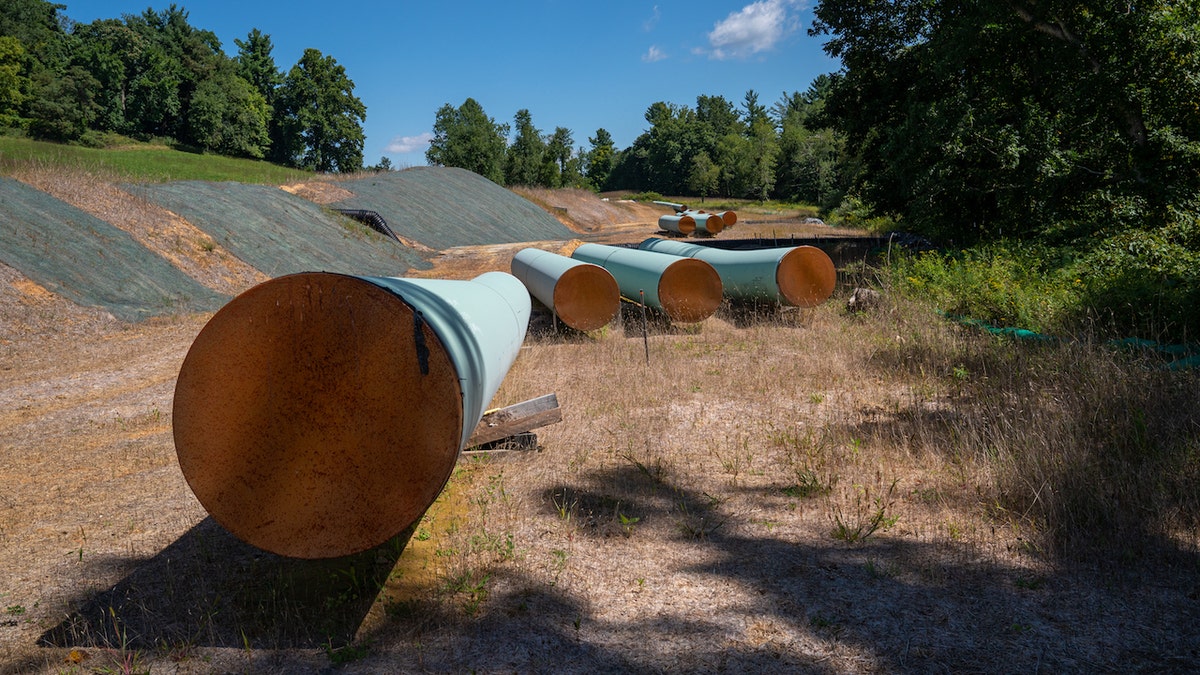Red tape is holding up dozens of key energy projects, new research shows
FIRST ON FOX: New research published Friday morning and shared with Fox News Digital sheds light on the growing backlog of energy projects that have been slowed by a cumbersome permitting process.
The research — published by the right-leaning Americans for Prosperity in a series of state-level reports — highlighted 30 energy projects across six states that have been in development for years and, in some cases, more than a decade largely due to environmental regulations. The group analyzed both traditional and green energy projects with potential to lower costs and boost energy security for consumers.
“Runaway permitting regulations are holding up countless energy projects that would make life more affordable for American families,” Americans for Prosperity’s regulatory policy fellow Marc Marie told Fox News Digital. “President Biden’s crusade against affordable energy has only made the problem worse. Oil and gas prices are on the rise, home energy prices are through the roof, and Americans are paying more for less.
“This study reveals project after project bogged down in permitting delays that would lower Americans’ energy bills if they were built,” Marie continued. “Americans are counting on Congress to end the top-down policies that are stifling production and make real permitting reforms to unleash our country’s energy resources.”
SUPREME COURT REINSTATES MAJOR GAS PIPELINE IN BLOW TO ENVIRONMENTAL GROUPS
Energy policy experts with Americans for Prosperity, in collaboration with data scientists with regulatory intelligence firm ARBO, focused particularly on projects in Arizona, Ohio, Montana, Nevada, Pennsylvania and West Virginia.
The reports highlighted how red tape delays fossil fuel, wind, solar, hydropower, transmission line and mining projects and the negative economic impacts of slowing such projects.
CALIFORNIA TO EXPAND FOSSIL FUEL PROJECT GAVIN NEWSOM SAID HE WAS ‘FULLY COMMITTED’ TO SHUTTING DOWN
“Across the country, America is having a difficult time grappling with inflation, and the cost of keeping the lights on is not exempt from these rising costs,” the reports state. “The factors affecting these energy utility prices can vary depending on where you live and how your local energy system is set up.”
“Permitting delays for new pipelines, refineries, and mining and drilling leases are needlessly raising utility bills and prices at the pump,” they continue. “When projects are held up by permit delays or litigation, it can cause companies to face a decision to abandon critical projects that would increase energy abundance with little or even positive environmental impact.”
According to the research, projects are often slowed or stalled by regulations that open the door to environmental litigation, increased costs imposed by regulations, uncertainty caused by red tape, administrative burdens and a chilling effect created by regulations that disincentivize further investment.

In one example, the Resolution Copper mine located about 60 miles east of Phoenix was initially proposed in 2013 but has been repeatedly delayed by the environmental permitting process and ongoing litigation. The project is expected to create 1,500 jobs once operational, generate another 2,200 indirect jobs and provide as much as $61 billion in economic value for Arizona over its 60-year lifespan.
If approved, the project would be the largest copper mine in North America and produce up to 25% of domestic copper supplies. Copper is a key mineral needed for a wide range of green energy projects.
REPUBLICANS, DEMS JOIN FORCES IN EFFORT TO REVERSE ANTI-FOSSIL FUEL PROVISION IN BIDEN’S CLIMATE PACKAGE
In addition, the research released Friday showed how environmental permitting has slowed the Yellow Pine Solar project, a proposed 500-megawatt solar project in Clark County, Nevada, with enough capacity to power 100,000 homes. While the project is under construction, its first right-of-way application was filed more than a decade ago in 2011 and was slowed due to eco reviews and lawsuits.
In another example, the Constitution Pipeline, a proposed 120-mile natural gas pipeline that would have stretched from Pennsylvania to New York, was abandoned in 2020 after a year-long permitting process. The $700 million project would have created 2,400 jobs, more than $13 million in tax revenue and transported 500,000 dekatherms of natural gas per day, according to estimates.
And a fourth example, the Gordon Butte Pumped Storage Hydro Project, is a $1 billion closed-loop pumped storage hydroelectricity facility proposed for Meagher County, Montana. The Federal Energy Regulatory Commission gave the project its initial environmental permit in 2013, but the project is targeted to enter operation in 2029.

The Americans for Prosperity report comes as Republicans and Democrats continue to negotiate permitting reform legislation that would seek to significantly curb the amount of time the permitting process takes for energy projects.
In May, Sen. Joe Manchin, D-W.Va., who chairs the Senate Energy and Natural Resources Committee, reintroduced his Building American Energy Security Act. His office said the legislation was intended to serve as the starting point for upcoming conversations in Congress about “reforming energy permitting to ensure American energy security and independence.”
Manchin first introduced the Building American Energy Security Act in September 2022 after Congress passed, and President Biden signed, the Inflation Reduction Act. The legislation was billed as a necessary counterpart to the IRA, ensuring that green energy projects supported by that bill would receive quicker federal approvals.
After the legislation stalled, Senate Majority Leader Chuck Schumer, D-N.Y., agreed in December to attach it to the annual National Defense Authorization Act in a move that was supported by Biden and green energy groups but opposed by environmental groups. However, in a 47-47 vote in which 40 Democrats and seven Republicans voted in favor of the bill, the Senate rejected the amendment.
Read the full article Here


